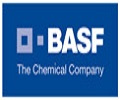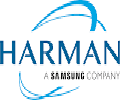-
Email Us
- Top Reports
Global Smith-Magenis Syndrome Treatment Market Competitive Environment 2025-2032
Price
Single User License 3300
Multi User License 6000
Corporate License 7200
The Smith-Magenis Syndrome (SMS) treatment market has emerged as a significant area within the healthcare sector, focusing on managing the needs of individuals affected by this rare genetic disorder. SMS, caused by a deletion or mutation on chromosome 17, manifests through a range of behavioral, developmental, and physical challenges, necessitating tailored therapeutic interventions. This market is dedicated to providing comprehensive solutions that address the multifaceted symptoms associated with SMS, including behavioral management, sleep disturbances, and developmental support. Recently published reports, such as those by STATS N DATA, highlight that the current market is valued at approximately $xx million, with historical data showing steady growth, fueled by increased awareness and advancements in genetic research.
Looking ahead, the Smith-Magenis Syndrome treatment market is anticipated to witness significant growth, driven by several key factors. As the incidence of SMS becomes more recognized and diagnosed, demand for effective treatment options is expected to rise. Market analysts project a compound annual growth rate (CAGR) of approximately xx% over the next five years, indicating a robust expansion as new therapeutic methods and interventions are developed. This growth trajectory is supported by technological advancements in genetic testing and personalized medicine, which enable healthcare providers to better tailor treatments to the individual needs of patients with SMS.
However, the market does face certain restraints, including limited awareness among healthcare professionals and challenges in accessing specialized care for SMS patients. Despite these challenges, abundant opportunities exist, particularly in the realm of clinical trials for novel therapies and increased investment in research and development. Innovative treatments, including gene therapy and behavioral interventions, are reshaping the landscape, offering hope for improved outcomes for those affected by this syndrome. As stakeholders in the Smith-Magenis Syndrome treatment market continue to collaborate and innovate, the future seems promising, fostering an environment where individuals with SMS can attain better quality of life and support.
To succeed in today's global market, businesses and investors need to keep up with the latest trends in the SMITH-MAGENIS SYNDROME TREATMENT MARKET. This comprehensive market research report by STATS N DATA provides an essential resource for those seeking in-depth insights into the Global Smith-Magenis Syndrome Treatment Industry. The report goes beyond mere data presentation, offering detailed revenue forecasts, in-depth future projections, and an analysis of key trends from 2024 to 2031. It is crafted to guide decision-makers in formulating strategies that align with the anticipated evolution of the market.

Market Overview and Trends
The report begins by examining the current size and scope of the Smith-Magenis Syndrome Treatment Market, leveraging historical data to uncover crucial insights and track the market's progression over time. This section serves as a foundational analysis, helping stakeholders understand the current market dynamics and the factors that have influenced its growth. By analyzing past trends, the report enables stakeholders to predict future developments and position themselves to capitalize on emerging opportunities.
Looking forward, the report provides expert forecasts on the future trajectory of the Smith-Magenis Syndrome Treatment Market. It identifies critical growth drivers, such as technological innovations and rising demand across various sectors, while also addressing potential challenges, including regulatory shifts and economic volatility. This forward-looking analysis equips stakeholders with the knowledge necessary to make informed decisions and develop strategies that will ensure their success in a rapidly changing market environment.
Market Segmentation
The Smith-Magenis Syndrome Treatment Market is segmented into several key categories, including product type, application, and geographic region. The report provides a detailed analysis of each segment, including:
Type
- Medicine, Surgery, Other
Application
- Hospital, Specialty Clinic, Homecare, Other
Each segment is thoroughly examined to understand its contribution to the overall market dynamics. The report evaluates the size and growth rate of each segment, offering insights into which areas are expanding rapidly and which maintain stable growth. This segmentation analysis is critical for identifying the most promising opportunities within the market.
Additionally, the report features an attractiveness analysis of the Smith-Magenis Syndrome Treatment Market, assessing the appeal of each segment based on factors such as market potential, competitive intensity, and growth prospects. This evaluation helps investors and companies determine where to allocate their resources for maximum returns.
The report also includes a comprehensive geographic analysis, breaking down the market by region, including North America, Europe, Asia-Pacific, Latin America, and the Middle East & Africa. Understanding these regional differences is crucial for stakeholders looking to tailor their strategies to specific markets.
Competitive Landscape
Companies profiled in this report are
- Neurim Pharmaceuticals, Sanofi, Eisai, Boehringer Ingelheim International, Roche Holding, ALLERGAN, Johnson & Johnson, Vanda Pharmaceuticals, PhotoPharmics, Teva Pharmaceutical Industries, Purdue Pharma, Rhythm Pharmaceuticals, Novartis, Takeda Pharmaceutical
The competitive landscape of the Smith-Magenis Syndrome Treatment Market is characterized by intense competition and constant innovation. This report offers an in-depth overview of the competitive environment, profiling the major players and analyzing their market shares. A comprehensive SWOT analysis is included for each key competitor, assessing their strengths, weaknesses, opportunities, and threats. This analysis provides stakeholders with a clear understanding of how they compare to others in the market and highlights areas where they can improve.
The report also explores the strategic initiatives undertaken by key players, such as mergers, acquisitions, partnerships, and new product launches. These insights allow stakeholders to anticipate changes in the competitive landscape and adjust their strategies accordingly.
Furthermore, the report includes a benchmarking analysis of key products and services within the Smith-Magenis Syndrome Treatment Market. This comparison highlights the performance and positioning of various offerings, helping stakeholders identify industry best practices and areas where improvements are needed.
Recent Developments
The Smith-Magenis Syndrome Treatment Market has experienced several significant developments in recent years, with key events including mergers, acquisitions, partnerships, and new product launches. This report provides a detailed analysis of these developments, showing how they have shaped the market and influenced its direction. Understanding these changes is essential for stakeholders who want to stay competitive and adapt to new market conditions.
In addition to these developments, the report also covers strategic alliances and collaborations that have been formed within the market. These partnerships are crucial for driving innovation and expanding market reach, making them a key focus of the report.
The report further highlights the latest technological advancements and innovations within the Smith-Magenis Syndrome Treatment Market. This section provides stakeholders with insights into emerging trends and opportunities, helping them leverage these developments to maintain a competitive edge.
Technological Advancements and Innovations
Technological advancements are a driving force behind the evolution of the Smith-Magenis Syndrome Treatment Market. This report highlights the most impactful technological developments, showcasing how they are shaping the industry and creating new opportunities. By examining these advancements, the report provides stakeholders with the information they need to stay ahead of the curve and capitalize on technological trends.
The report also looks into future innovations that have the potential to disrupt the market. By understanding these emerging technologies, stakeholders can position themselves to take advantage of new opportunities and navigate challenges effectively.
Industry Dynamics and Structure
The report provides a comprehensive analysis of the structure and dynamics of the Smith-Magenis Syndrome Treatment Market, offering stakeholders a clear understanding of how the industry operates. This analysis highlights key components and their interactions, helping stakeholders identify opportunities for collaboration and innovation, which are critical for driving market growth.
The report also explores the various factors that influence industry dynamics, including economic conditions, regulatory changes, and technological advancements. These insights enable stakeholders to develop strategies that align with the market's overall structure and take advantage of emerging opportunities.
Additionally, the report includes a value chain analysis, which traces the process from suppliers to end-users. This analysis highlights where value is added at each stage and identifies potential areas for efficiency improvements. By optimizing the value chain, stakeholders can enhance their operational efficiency and gain a competitive edge.
Competitive Analysis Using Porter's Five Forces
The report employs Porter's Five Forces Analysis to offer a strategic framework for understanding the competitive environment within the Smith-Magenis Syndrome Treatment Market. This analysis evaluates the bargaining power of buyers and suppliers, the threat of new entrants and substitute products, and the intensity of competitive rivalry. These insights are crucial for stakeholders seeking to understand the factors that influence profitability and competitiveness in the market.
The report also considers how these forces might evolve over time, providing stakeholders with a forward-looking perspective on the future competitive landscape. This analysis helps in planning and developing strategies that will ensure long-term competitiveness.
Value Chain Analysis
The report?s value chain analysis offers a detailed look at the process from suppliers to end-users within the Smith-Magenis Syndrome Treatment Market. This analysis provides stakeholders with insights into each stage of the value chain, highlighting where value is added and identifying potential areas for improvement. Optimizing the value chain is essential for increasing efficiency and strengthening market position.
In addition, the report explores the key drivers of value creation within the Smith-Magenis Syndrome Treatment Market. Understanding these drivers is crucial for stakeholders aiming to maximize returns and drive business growth.
Customer Preferences and Trends
Customer preferences are a key factor in the success of businesses within the Smith-Magenis Syndrome Treatment Market. This report identifies the major trends and preferences shaping the industry, providing stakeholders with a clear understanding of what customers value most. The report also examines how these preferences are evolving, offering insights into how businesses can adapt their products and services to meet changing demands.
The report further explores how these trends are influencing the market, showing how shifts in consumer behavior are driving changes in the industry. By aligning their strategies with customer needs, stakeholders can improve satisfaction, build loyalty, and drive business growth.
Regulatory Environment
The regulatory environment plays a significant role in shaping the Smith-Magenis Syndrome Treatment Market, and this report provides a thorough overview of the legal and regulatory framework that impacts the industry. It examines the key regulations and standards that companies must adhere to, helping stakeholders navigate the complexities of the regulatory environment.
The report also assesses the impact of recent regulatory changes on the market, offering insights into how these changes are influencing the industry. Staying informed about these regulations is essential for stakeholders who want to remain compliant and avoid potential legal issues.
Additionally, the report looks at potential future developments in the regulatory environment, helping stakeholders prepare for upcoming challenges and adjust their strategies to stay compliant.
Market Entry Strategy
Entering the Smith-Magenis Syndrome Treatment Market presents several challenges, and this report identifies the primary obstacles that new entrants must overcome to succeed. It covers key success factors such as innovation, effective marketing, and building strong partnerships, which are essential for establishing a foothold in the market.
The report also provides practical recommendations for market entry, offering strategies for positioning, customer acquisition, and differentiation. These insights are designed to help new entrants navigate the competitive landscape and achieve success in the Smith-Magenis Syndrome Treatment Market.
Economic Indicators and Risk Analysis
The Smith-Magenis Syndrome Treatment Market is influenced by various economic factors, and this report explores how macroeconomic indicators such as GDP growth, inflation, and employment trends impact the market. This analysis provides stakeholders with a broad understanding of the economic environment and its influence on the Smith-Magenis Syndrome Treatment Market.
The report also identifies potential risks and uncertainties that could affect the market, such as economic volatility, regulatory changes, and intense competition. By understanding these risks, stakeholders can develop strategies to manage them and protect their investments.
The report offers specific strategies for mitigating these risks, helping stakeholders maintain stability and achieve sustainable growth in the Smith-Magenis Syndrome Treatment Market. Proactively addressing potential challenges is essential for safeguarding interests and ensuring long-term success.
Investment Analysis
This report evaluates key suppliers and distributors in the Smith-Magenis Syndrome Treatment Market, highlighting their importance within the supply chain. It provides insights into their capabilities and reliability, helping stakeholders optimize their operations and strengthen their market positions.
The report also identifies key investment opportunities within the Smith-Magenis Syndrome Treatment Market, offering strategic recommendations for maximizing returns. It includes an analysis of return on investment (ROI) and financial projections, which are essential for understanding the profitability of different investment options.
Additionally, the report features feasibility studies for potential new projects, providing stakeholders with the information they need to assess the viability of new ventures. These studies consider factors such as market demand, costs, and potential revenue, helping stakeholders make informed decisions about where to invest their resources.
Technological and Innovation Insights
Technological advancements are shaping the future of the Smith-Magenis Syndrome Treatment Market, and this report provides a comprehensive analysis of emerging technologies and innovations. It highlights how these developments are driving change and creating new opportunities within the market.
The report also examines research and development (R&D) activities within the Smith-Magenis Syndrome Treatment Market, offering insights into the current state of innovation and identifying areas for strategic investment. Understanding the innovation landscape is crucial for stakeholders looking to maintain a competitive edge.
Additionally, the report explores the potential of disruptive technologies within the Smith-Magenis Syndrome Treatment Market. These technologies have the capability to significantly alter the industry landscape, presenting both opportunities and challenges for market participants. By staying informed about these technological shifts, stakeholders can proactively adjust their strategies to leverage new innovations and maintain their market positioning.
Geographic Analysis
The report provides a detailed geographic analysis of the Smith-Magenis Syndrome Treatment Market, covering key regions such as North America, Europe, Asia-Pacific, Latin America, and the Middle East & Africa. This analysis is essential for understanding regional trends and identifying growth opportunities in different markets.
Regional Insights
The report examines regional trends and developments, highlighting the most significant drivers and challenges in each area. These insights help stakeholders make informed decisions about market entry and expansion, ensuring that their strategies are aligned with regional market conditions.
Market Size and Growth Rate by Region
The report analyzes the market size and growth rate across different regions, providing a clear view of where the most significant opportunities lie. This information is vital for planning strategic initiatives and expanding market presence.
Emerging Markets and Opportunities
The report identifies emerging markets with high growth potential, offering strategic recommendations for capitalizing on these opportunities. Understanding these emerging markets is essential for stakeholders looking to expand their presence and tap into new areas of growth.
FAQ
What is the Global Smith-Magenis Syndrome Treatment Market size, and what growth rate can be expected during the forecast period?
What are the key factors driving the growth of the Smith-Magenis Syndrome Treatment Market?
What challenges and risks does the Smith-Magenis Syndrome Treatment Market currently face?
Who are the major players in the Smith-Magenis Syndrome Treatment Market?
What are the current trends influencing the Smith-Magenis Syndrome Treatment Market?
What insights can be drawn from applying Porter's Five Forces model to the Smith-Magenis Syndrome Treatment Market?
What global expansion opportunities are available in the Smith-Magenis Syndrome Treatment Market?
This comprehensive market research report on the Global Smith-Magenis Syndrome Treatment Market is an invaluable resource for investors, executives, and companies seeking a deep understanding of the industry. With detailed analyses, actionable insights, and strategic recommendations, the report equips stakeholders with the knowledge they need to make informed decisions and capitalize on the opportunities within the Smith-Magenis Syndrome Treatment Market. Readers are encouraged to leverage these insights to enhance strategic planning and secure a strong competitive position in this dynamic market.
Frequently Asked Questions
1 What global expansion opportunities are available in the Smith-Magenis Syndrome Treatment Market?
The Smith-Magenis Syndrome Treatment report identifies several regions, including North America, Europe, Asia-Pacific, and emerging markets, that present significant growth opportunities. It provides strategic recommendations for companies looking to expand their market presence globally.
2 Who are the major players in the Smith-Magenis Syndrome Treatment Market?
The report profiles the leading players in the Smith-Magenis Syndrome Treatment Market like Neurim Pharmaceuticals, Sanofi, Eisai, Boehringer Ingelheim International, Roche Holding, ALLERGAN, Johnson & Johnson, Vanda Pharmaceuticals, PhotoPharmics, Teva Pharmaceutical Industries, Purdue Pharma, Rhythm Pharmaceuticals, Novartis, Takeda Pharmaceutical providing a comprehensive SWOT analysis for each. It examines their market shares, strengths, weaknesses, and strategies, helping stakeholders understand the competitive landscape.
3 What years does this Smith-Magenis Syndrome Treatment Market Report cover?
The report covers the Smith-Magenis Syndrome Treatment Market historical market size for years: 2019, 2020, 2021, 2022 and 2023. The report also forecasts the Smith-Magenis Syndrome Treatment Industry size for years: 2024, 2025, 2026, 2027, 2028, 2029, 2030, and 2031
4 What challenges and risks do the Smith-Magenis Syndrome Treatment Market currently face?
The Smith-Magenis Syndrome Treatment Market faces several challenges, such as economic uncertainties, regulatory shifts, and intense competition. The report provides a risk analysis that identifies potential obstacles and offers strategies for managing them.
5 What insights can be drawn from applying Porter’s Five Forces model to the Smith-Magenis Syndrome Treatment Market?
The Porter’s Five Forces analysis provides valuable insights into the competitive dynamics of the Smith-Magenis Syndrome Treatment Market. It evaluates the bargaining power of buyers and suppliers, the threat of new entrants, the impact of substitutes, and the intensity of competitive rivalry.
6 What are the current trends influencing the Smith-Magenis Syndrome Treatment Market?
Current trends include technological innovations, strategic mergers and partnerships, and shifting consumer preferences. The report discusses how these trends are shaping the market and driving growth opportunities.
7 What competitive strategies are key players in the Smith-Magenis Syndrome Treatment Market using?
The report analyzes the competitive strategies of major players in the Smith-Magenis Syndrome Treatment Market, including mergers, acquisitions, and partnerships. It also looks at product innovations, helping stakeholders anticipate shifts in the market and stay competitive.










